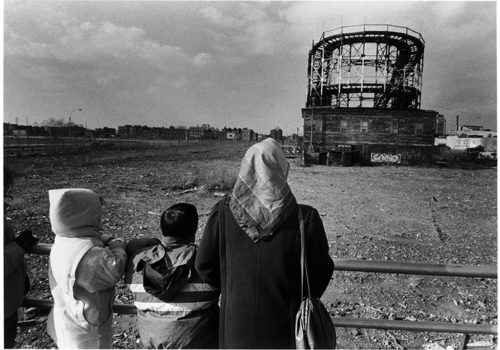Coney Island is a world unto itself. It is a time and place that exists independent of everything else. Situated where South Brooklyn meets the Atlantic Ocean, it is an urban fantasy of beachfront life. It is equal parts escapism and entertainment, strange and seedy and strikingly American at its core. It is a fantasy world of populist delight: rides, games, and half-naked girls.
Harvey Stein has been photographing life in this inimitable stretch of land since 1970 and the result is Coney Island: 40 Years 1970–2010 (Schiffer), and it features a carefully curated selection of images that take us there. From the boarwalk and the pier to the amusements and the Mermaid Parade to the workers and the beach, Stein’s photographs take all that is original and iconoclastic about Coney Island and put them in arm’s reach.
Stein observes, “Coney Island is about people, it’s the people that intrigues me and what I am always drawn to photograph. All sizes, shapes, races, ages, religions, behaviors. The amusements, the sea, the open air, the sun and sand all impart a kind of freedom of behavior that I don’t see anywhere else. And I am interested in the contradictions and ironies present in its social world. I am always impressed with how we all get along at Coney Island.”
While Coney Island is available to all, it is home to Brooklynites. It is a place that breeds its own kind of people and attracts them in kind. It has a “you tawkin to me?” kinda vibe that allows its denizens to live in the public eye with a kind of shameless nakedness of spirit that makes its inhabitants unlike any other. It attracts exhibitionists and voyeurs, the people themselves being the greatest part of the show. And whether they are participating or simply kicking back, they make for what, in Stein’s eye, is undoubtedly, a memorable photo opp.
There is a spirit of love and acceptance that surrounds this neighborhood, and part of that comes from being a place for escape—what goes on in Coney Island stays there. There is an urban edge to this slice of paradise, a way in which the bright sun casts a long shadow and there is a sense of something else lurking within this distinctive world. It is that the stress of New York is not quite forgotten but simply put aside, and it lingers and it floats and it makes one wonder just who these people are. How did they get here and how did they get this way? Stein’s photographs do not provide answers so much as they provoke question after question with each turn of the page.
The strange and strained energy becomes most evident at the Mermaid Parade where women of all ages and ethnicities cast themselves as sirens of the sea. They dress in costumes they have made themselves and they parade for the pleasure of being part of something larger than themselves. And as they participate they take on another role; they are icons of the feminine, Brooklyn style, and that is something else. It is direct and and without shame and it is “love me or leave me alone.” And the result is a parade that has a spirit all its own.
Because Coney Island is its own land. Yes it is Brooklyn, but it is also something of a city-state. It’s a place where people converge to live free, to be one with the earth and the ocean as only New Yorkers could be. Stein’s photographs are a revelation and a treat, allowing us to share in the glory and the wonder and the spirit unlike any other. That is Coney Island, and it comes every summer. And though the faces may change, it remains true to itself. That is what it is to be a New Yorker, South Brooklyn style.
















